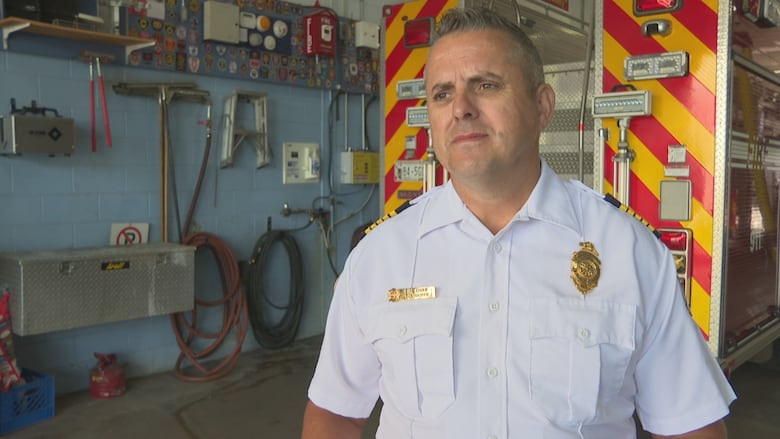Charlottetown Fire Department hires new platoon chiefs, adds 9 more volunteers
Calls becoming more demanding with city's growing population, says chief

The Charlottetown Fire Department is welcoming several new staff to its ranks, both paid and volunteer.
Chief Tim Mayme said the new additions include two new platoon chiefs, with another two set to be hired by the end of August. Platoon chiefs are paid firefighters who oversee operations.
"It really helps with co-ordination of training, co-ordination of response capabilities and that increased response capability of having four [platoon chiefs] on scene," Mayme said.
Nine volunteers completed the Level 1 firefighting program in June and were also recruited to the department. Mayme said that's more successful candidates than usual, and that the new recruits include some newcomers to P.E.I., as well as women.
The fire chief said the more members the department has, the easier it is for the department to respond to fires.
"It makes a world of difference for the department," he said. "They're face-forward, they're the first on the scene in a lot of incidents because they're eager, they want to be there to help."
The expansion of the department comes at a time when fire and emergency calls are becoming more demanding because of Charlottetown's growing population.
The new additions come after the city provided the department with around $300,000 over the last two years to help increase staffing, said Mayme.
Mulch fires biggest concern in summer
This time of year, mulch fires tend to be the largest concern for the department, said Deputy Chief Kent Mitchell.

A recent mulch fire in Sherwood, which Mitchell said was likely caused by a discarded cigarette, grew so large it damaged a nearby building.
"The seriousness of even one [mulch fire] can be really catastrophic," he said.
"It's going to ignite that exposure material, which could be wood or plastic siding, vinyl siding.... Once that happens, it's a very serious fire."
Mitchell said mulch should be about 18 inches away from any buildings on a property, and spread no more than three inches thick.
With files from Laura Meader

